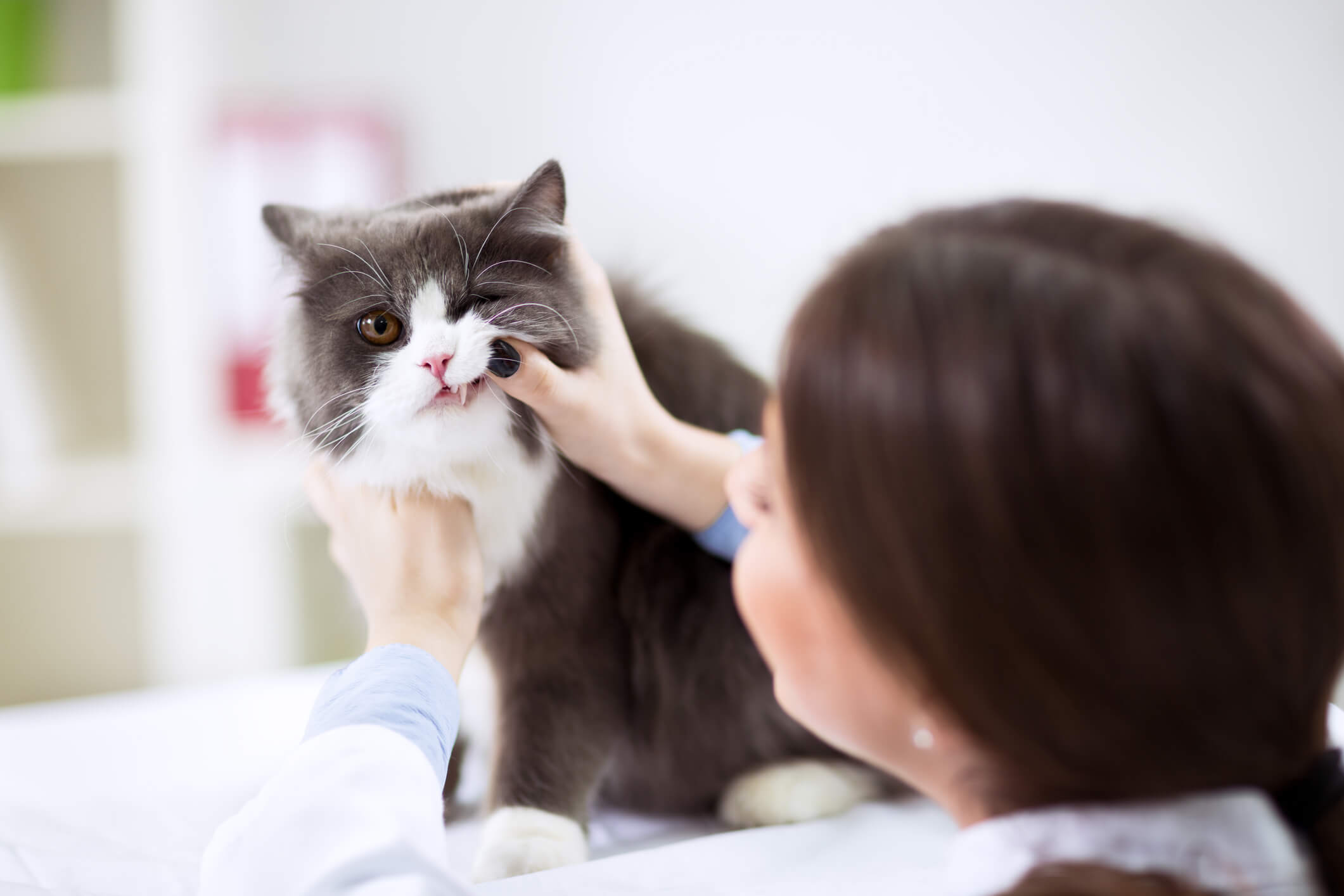
Watch Your Cat for this Painful Tooth Problem
Most cat ailments tend to fly under the radar. Kitties can’t tell their owners when their teeth hurt, but even if our cats could speak, they’d say nothing anyway! Cats would much rather deal with the pain than reveal their weaknesses to people and other pets. Unfortunately, their deceptiveness means many diseases are often left to fester.
One such disease that typically goes unnoticed is feline tooth resorption. Pet parents should learn about tooth resorption because nearly three out of four cats will experience it at some point in their lives. Here’s what it is, how to detect it and the treatment options you have moving forward.
What’s feline tooth resorption?
Feline tooth resorption is one of the most common ailments among adult cats. The oral condition goes by many other names like resorptive lesions, oral resorption, feline odontoclastic resorption and cervical line erosion. Tooth resorption occurs when the tooth crown or root starts to break down. Advanced stages of tooth resorption make it look like the tooth is sinking below the gum line.
The crown is the visible part of a tooth, while the root is embedded deep into the jaw bone. Tooth resorption often begins by slowly chipping away at the crown’s enamel. Cases that go undetected for too long will eventually spread to the root and turn it into a pulp-like consistency. Tooth resorption that affects the root will blur the line between where the jaw bone ends and the root starts. Bone growth may begin to invade where the healthy root once was.
Symptoms of tooth resorption in cats
Tooth resorption is very painful for cats, yet they excel at masking their discomfort. This makes it difficult for pet parents to detect the early stages at home. Obvious symptoms usually don’t show up until tooth resorption becomes severe.
Take your kitty to the vet if you notice any of the following symptoms:
- Trembling jaw: Once the crown deteriorates, the tooth’s inner portion becomes exposed. This section of the tooth contains highly sensitive blood vessels and nerves. When something touches the exposed nerves, muscle spasms ripple along the cat’s jaw line. The exposed inner portion is what makes tooth resorption so painful.
- Bleeding gums: Cats with tooth resorption often develop gingivitis. The gums will appear bright red around the affected tooth. Bleeding may occur around a whole section of the gum line if more than one tooth is getting resorbed.
- Strange eating behaviors: The pain associated with tooth resorption forces cats to alter how they eat. Cats with tooth resorption may chew their food on only one side of the mouth. Some cats don’t bother with chewing and may swallow whole pieces of kibble. Pet parents should also take note when cats frequently drop food out of their mouths.
Recommended treatment options
Unfortunately, there’s no way to heal tooth resorption. Your vet will recommend either a crown amputation or full extraction, depending on which parts of the tooth have been damaged. Crown amputations are reserved for when the root is completely disintegrated because vets are unable to tell where the tooth ends. Full extractions are possible when the root is still fully intact.
There are a few things you can do at home to aid the post-surgery recovery process. Vets typically prescribe pain medicine and antibiotics to prevent secondary infections. Follow the vet’s instructions on how to administer these medications. You should also consider switching to a softened or completely wet food diet for 10 days following the procedure.
Tips for preventing tooth resorption
The cause of tooth resorption remains unknown. That means veterinarians have yet to discover methods that effectively prevent the oral disease. However, you can detect tooth resorption in its early stages by taking your cat in for annual oral exams. During the visit, your vet will visually inspect the inside of your cat’s mouth and take a series of X-rays. Doing so allows the cat to receive prompt treatment and minimize their pain.
Although it may not necessarily prevent tooth resorption, pet parents should stay on top of their kitty’s oral hygiene. At-home oral care keeps your kitty safe from other diseases like cavities and periodontal disease. All you have to do is brush their teeth twice per week. As you brush the cat’s teeth, look for signs of tooth resorption or any other oral disease. Contact your vet right away if anything seems out of the ordinary.
It’s disheartening to hear that your precious feline is suffering from tooth resorption. On the bright side, tooth resorption is easily treatable and has a good prognosis for recovery. A vet can detect tooth resorption long before it becomes painful when you stick to regular checkups. Your kitty companion will suffer in silence no more!



